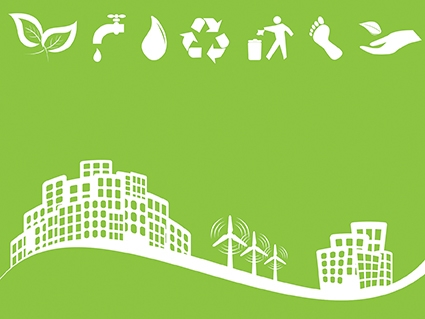Going Green with City Transport: Making the Right Choice
There are some records that no one wants to have. Unfortunately, Georgia has found itself in possession of precisely one of those. According to a study titled ‘Energy and Air Pollution,’ released last year by the International Energy Agency, Georgia tops the list of “highest mortality rate attributed to air pollution (household and outdoor) by country, 2012”, with close to 300 deaths per 100,000 people.
Now, five years later, with the citizens of Tbilisi continuing to be choked by the city’s ever-increasing air pollution as the swathes of mostly old and unregulated cars increase and clog up the streets, it is only right that the issue made it on to the agenda of last week’s high profile 10th International Local Economic Development Forum at The Biltmore hotel.
One method of relinquishing this unwanted title and tackling the slow suffocation of Tbilisi’s airways, is through the development and expansion of the public transport system linking the city. According to the research presented by Mr. Neil Chadder, Senior Urban Environmental Engineer at the Cities Development Initiative for Asia (CDIA), the modal share of commuting in Tbilisi is: 27% walking; 39% public transport; 3% taxi; 30% car. Unfortunately, due to a lack of proper infrastructure: the absence of priority bus lanes at junctions, the blocking of bus routes due to congestion, the absence of metro access to large parts of the city; etc., the average commute by public transport is 39 minutes — a full 10 minutes longer than the average car journey (29 minutes). And so Tbilisi finds itself in a Sisyphean predicament: to make up for those lost minutes sitting on the bus/metro, more residents are choosing to commute by car, increasing road traffic, deteriorating the efficiency of bus routes, and exacerbating the pollution problem. Coupled with the widespread lack of parking, Tbilisi is facing a race against time to redevelop its infrastructure and public transportation systems to manage the daily commutes of its residents in a sustainable manner.
Thankfully, something is being done.
As Mr. Chadder explained, the aim of CDIA is to aid Tbilisi in the translation of their strategies into real projects through the provision of key information to city officials so that the correct decisions regarding infrastructure investment are made. To combat the transportation issues afflicting Tbilisi, the detailed study of the CDIA completed “six interrelated plan components covering: (i) mechanisms for bus restructuring and bus priority; (ii) multi-criteria analysis to select a rapid transit corridor; (iii) conceptual bus rapid transit (BRT) plan; (iv) conceptual tram plan; (v) comparison between BRT and tram; and (vi) a city-wide parking strategy.” Furthermore, CDIA are mobilizing a transport advisor to assist Tbilisi City Hall with : the introduction of bus priority lanes; implementation of the parking strategy; improving the linking of bus GPS to traffic signals; the possible creation of a comprehensive Transport Authority; improved regulation of taxis and private hire cars; and a cycling strategy. The total cost of the project, excluding the continued maintenance of the metro, is estimated at $413,670,000.
Mr. Chadder believes that the key to achieving these goals is securing a shift from private (i.e. car) to public transportation. As he told GEORGIA TODAY, it is a shared responsibility:
“There’s a contribution to be made by everyone in society; each time we make a journey, we decide how we’re going to travel. Do we get out our car, or do we say ‘Hang on a minute! Do I really need to drive there or can I take public transport and/or walk there?’ I think that it’s a conscious decision that everyone can make at the start of every single journey. As humans, we are always going to take the journey that is the quickest and most convenient for us. Therefore, what the City has to do, and what we at CDIA are helping the City to do, is to make the public transport the most attractive option. My vision is to flip the statistics on their head and make the buses ten minutes faster than the average journey by car, as is the case now. If we can get this done by creating bus-lanes, establishing bus priority, and modifying our junctions to accommodate the buses, then I am sure that public transport will become the preferred option. People make individual choices, but let’s make the choice easy for the people. The responsibility lies with both the city and the individual”.
As the International Energy Agency’s report revealed, Georgia clearly has to get its act together and minimize its air pollution and the threats created by it. Five years on, the country, and especially its capital, still finds itself in dire straits. Thankfully, public consciousness has taken hold and change is being demanded. Action needs to be taken at every level. The appearance of the issue at the 10th International Local Economic Development Forum is certainly a step in the right direction.
Apart from developing and expanding the existing public transport network, the government should take greater action by banning the import and use of motor vehicles produced before the new millennia and introduce strict testing measures. The utilization of the Kura river as another form of public transport in Tbilisi, via ferries, is another possibility that could be looked into, and one that, Mr. Chadder admitted, had not been thought about yet. Of course, even if the CDIA’s plans for a new, efficient, and greener public transport infrastructure are successfully implemented, the city’s problems will not be solved, for there will certainly be scores, if not hundreds, of unhappy and angry taxi drivers, fighting against their impending redundancy, to deal with.
But that is a problem for a future, greener, less congested and suffocating Tbilisi to deal with. Let’s make sure the city gets there first.
Mate Foldi











